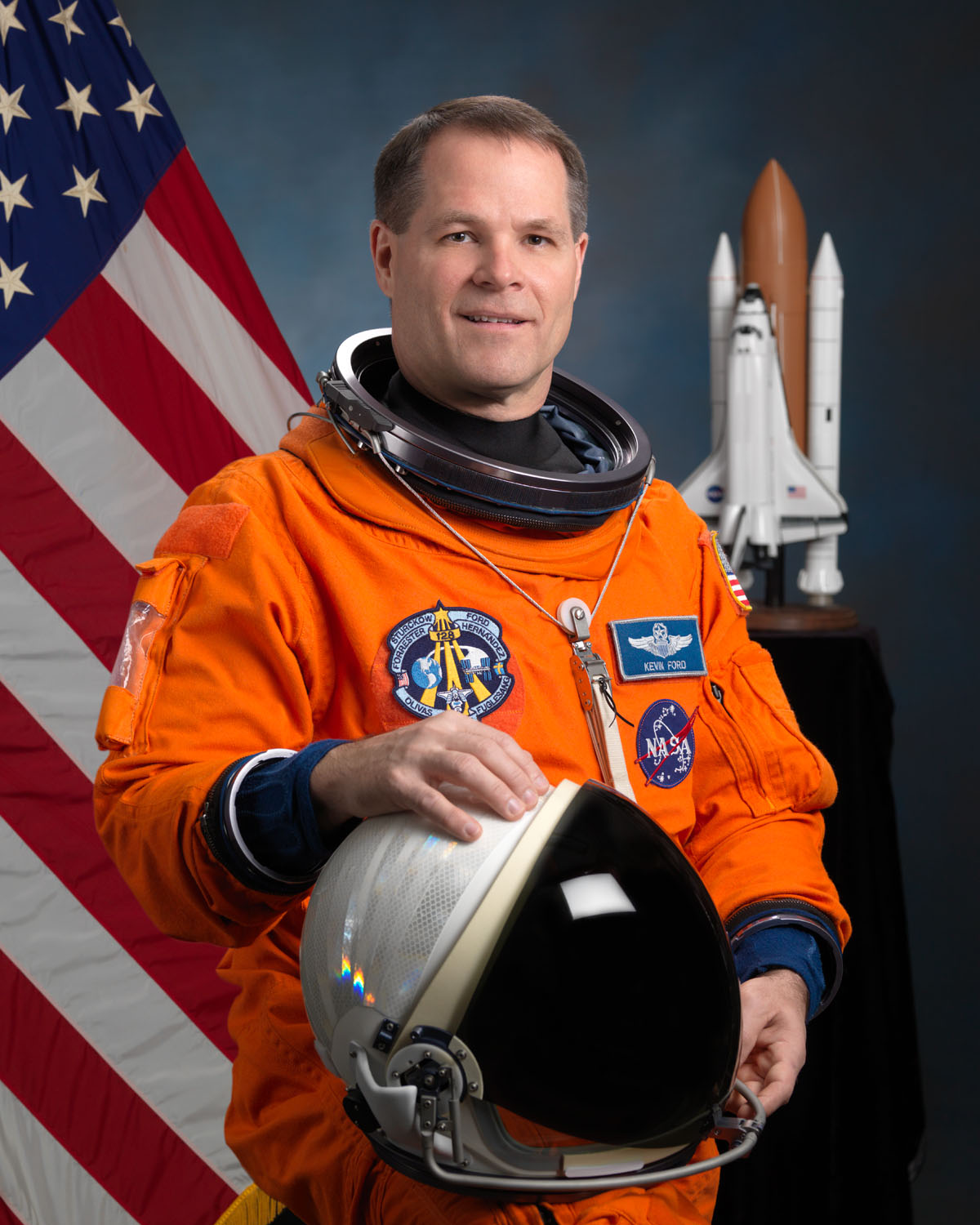Kevin A. Ford
American - (NASA)
Retired
Date of Birth: July 7, 1960
Age: 65
Kevin Anthony Ford is a retired United States Air Force Colonel and a NASA astronaut. Ford has received a number of special honors and awards, some of which are the Air Force Meritorious Service Medal, Air Force Commendation Medal, Aerial Achievement Medal and the Armed Forces Expeditionary Medal. Ford has also logged more than 5,000 flying hours and also holds FAA commercial certificates for airplanes, helicopters and gliders. Ford has served in many roles at NASA since his selection in July 2000. The roles include as a Capsule Communicator or CAPCOM. He was also the Director Of Operations at the Gagarin Cosmonaut Training Center in Star City, Russia from January 2004 to January 2005. He was pilot of STS-128 and Flight Engineer 2 of Soyuz TMA-06M from October 23, 2012 to March 16, 2013.
Space Shuttle Discovery / OV-103 | STS-128
National Aeronautics and Space Administration | United States of AmericaKennedy Space Center, FL, USA
Aug. 29, 2009, 3:59 a.m.
Status: Success
Mission:
STS-128 (ISS assembly flight 17A) was a NASA Space Shuttle mission to the International Space Station (ISS) that launched on 28 August 2009. Space Shuttle Discovery carried the Multi-Purpose Logistics Module Leonardo as its primary payload. Leonardo contained a collection of experiments for studying the physics and chemistry of microgravity. Three spacewalks were carried out during the mission, which removed and replaced a materials processing experiment outside ESA's Columbus module, and returned an empty ammonia tank assembly.
Low Earth OrbitSoyuz FG | Soyuz TMA-06M
Progress Rocket Space Center | RussiaBaikonur Cosmodrome, Republic of Kazakhstan
Oct. 23, 2012, 10:51 a.m.
Status: Success
Mission:
Soyuz TMA-06M begins expedition 33 by carrying 3 astronauts and cosmonauts to the International Space Station. Russian Commander, cosmonaut Oleg Novitskiy alongside Flight Engineers, Evgeny Tarelkin (RSA) & Kevin A. Ford (NASA) will launch aboard the Soyuz spacecraft from the Baikonur Cosmodrome in Kazakhstan and then rendezvous with the station. It landed on 16 March 2013, 03:11 UTC
Low Earth OrbitThe National Aeronautics and Space Administration is an independent agency of the executive branch of the United States federal government responsible for the civilian space program, as well as aeronautics and aerospace research. NASA have many launch facilities but most are inactive. The most commonly used pad will be LC-39B at Kennedy Space Center in Florida.
Long March 3B/E
Fengyun-4C
Launch Complex 2 (LC-2) - Xichang Satellite Launch Center, People's Republic of ChinaChina's geostationary meteorological satellite program FY-4 (Feng Yun 4) is the second generation of chinese geostationary meteorological satellites.
Long March 8A
SatNet LEO Group 17
Commercial LC-1 - Wenchang Space Launch Site, People's Republic of ChinaA batch of 9 Low Earth Orbit communication satellites for the Chinese state owned SatNet constellation operated by the China Satellite Network Group.…
Soyuz 2.1a
Obzor-R No.1
43/4 (43R) - Plesetsk Cosmodrome, Russian FederationNote: Assignment of payloads to this launch is uncertain. The Russian Obzor-R satellite is a planned X-band radar earth observation satellite desi…
LVM-3 (GSLV Mk III)
BlueBird Block 2 #1
Satish Dhawan Space Centre Second Launch Pad - Satish Dhawan Space Centre, IndiaAST SpaceMobile’s Block 2 BlueBird satellites are designed to deliver up to 10 times the bandwidth capacity of the BlueBird Block 1 satellites, requi…
Long March 12A
Demo Flight
Long March 12A Pad - Jiuquan Satellite Launch Center, People's Republic of ChinaFirst test launch of CASC/SAST’s Long March 12A rocket, with a dummy payload. The rocket’s 1st stage attempted to land on a landing pad about 300 km …




